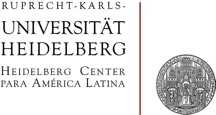Santiago-Heidelberg Doctoral Exchange Fellowship



About the Exchange Program
The Institute of Astrophysics at the Pontificia Universidad Catolica and the Center for Astronomy of Heidelberg University set up a joint Ph.D. degree program in astronomy and astrophysics based on the existing Ph.D. programs at both universities.
The program is intended to develop a lively exchange between the two university institutes, offer seminars, summer schools, and symposia, as well as workshops at both universities, foster and develop joint research projects and stimulate new inter-department programs. Graduate students from each university are offered a graduate student exchange fellowship to spend time working at the partner university to pursue co-supervised research. During that time the students will be full members of the research staff with all corresponding rights at the partner university.
The fellowships come with financial support to cover living expenses, travel costs, and may include some funding to pay for page charges of peer-review journal articles.
Fellowship Application
ELIGIBILITY
To apply for the PUC-HD Graduate Exchange Fellowship candidates must be enrolled in the astrophysics graduate program at the Institute of Astrophysics at PUC or University of Heidelberg. Especially encouraged to apply are students with a M.Sc. degree or diploma (including a written thesis) in astrophysics or closely related subjects.
APPLICATION MATERIALS
To apply, please, submit the following materials:
- i) signed cover letter, naming potential collaborators at the partner institution
- ii) curriculum vitae (CV)
- iii) research plan (2 pages max.)
We are providing easy-to-use LaTeX templates to streamline your application process. Please, use the following application sample materials: sample_cover.tex, sample_CV.tex. All documents must be submitted in English.
SUBMISSION DEADLINE
There is a floating deadline. We accept applications at any time. Submit your documents in PDF format to the following email address: tpuzia@astro.puc.cl
SELECTION PROCEDURE
Each complete application is evaluated on the basis of the applicant’s academic record and scientific interests and promise. The application evaluation is assigned to a Selection Committee (composed of scientists from the participating institutes) and is a multi-step procedure:
- Every complete application is evaluated separately by each member of the Selection Committee on the basis of research excellence, promise and compatibility. The Selection Committee discusses all complete applications and assigns a ranking.
- Based on the information gathered during the candidate review process, the Selection Committee assembles a shortlist of applicants recommended for acceptance.
- The Selection Committee Chair notifies both successful and unsuccessful applicants about the results based on the Selection Committee’s recommendations.
Past PUC-HD Exchange Fellows
2011/12: Mauricio Carrasco from PUC, working with Matthias Bartelmann at ITA and Felipe Barrientos (IA-PUC) on “Dark Matter Distribution in Massive Strong-Lensing Galaxy Clusters”
2012/13: Jorge Gonzalez from PUC, working with Fabian Walter and Henrik Beuther at MPIA-Heidelberg and Leopoldo Infante (IA-PUC) on “Probing the Interstellar Medium in High-Redshift Galaxies by Studying the Role of Dust Emission in Star Formation”
2013/14: Mirko Simunovic from PUC, working with Eva Grebel at ARI and Thomas H. Puzia (IA-PUC) on “Blue Straggler Star Populations in Milky Way Globular Clusters and the nearby Universe”
2013/14: Cristina García from PUC, working with Joseph Hennawi at MPIA-Heidelberg and Felipe Barrientos (IA-PUC) on “QSO Environments at z~4”
2016/17: Sebastian Stammler from HD, working with Jorge Cuadra at IA-PUC and Cornelis Dullemond (ITA) on “The Role of Ices in the Process of Planet Formation”
2016/17: Felipe Garrido Goicovic from PUC, working with Volker Springel at HITS and Jorge Cuadra (IA-PUC) on “Infalling Clouds onto Supermassive Black Hole Binaries”
2017/18: Yasna Ordenes Briceño from PUC, working with Eva Grebel at ARI and Thomas H. Puzia (IA-PUC) on “Unveiling the Architecture of the Fornax Cluster with its Compact Stellar Systems”
2018/19: Gergely Hajdu from PUC, working with Eva Grebel at ARI and Márcio Catelan (IA-PUC) on “The 3D-Structure of the inner Milky Way as told by its Cepheid Variables: The VVV Perspective”
If you have questions or comments, send your inquiry to tpuzia@astro.puc.cl